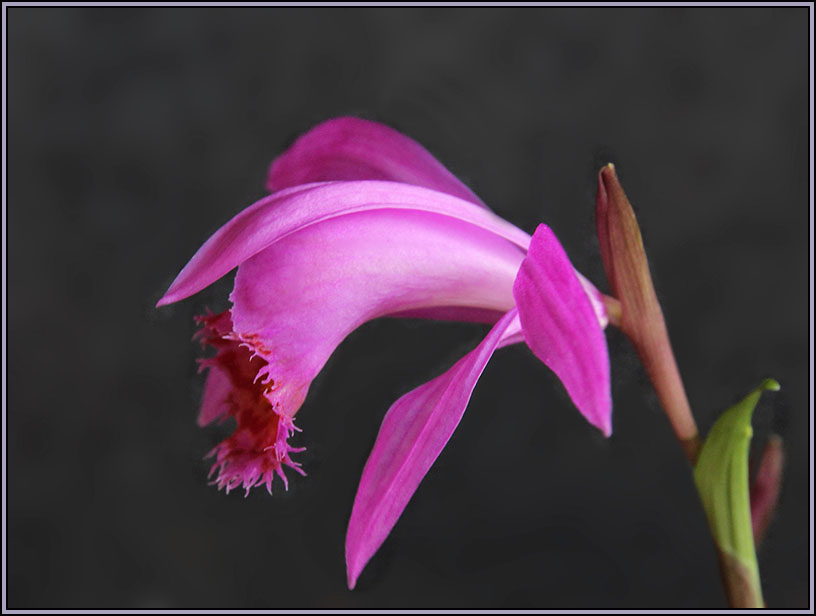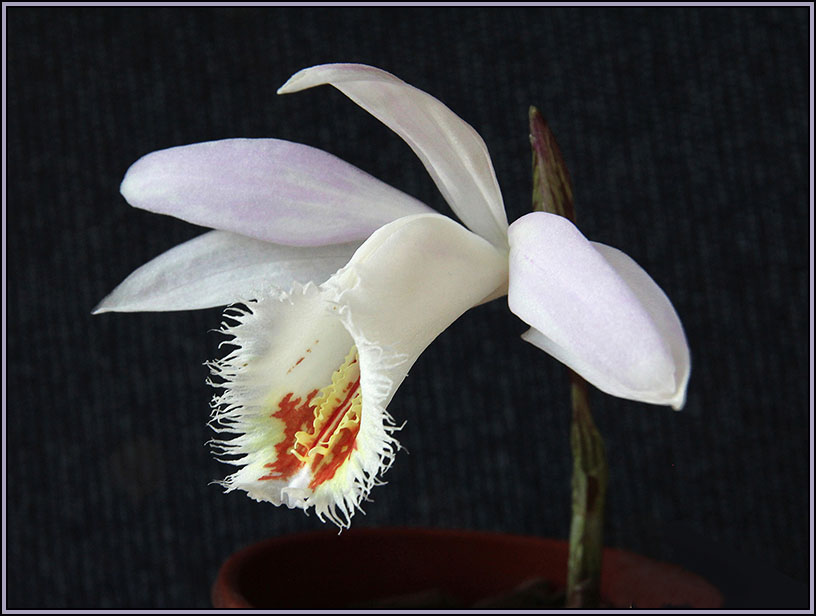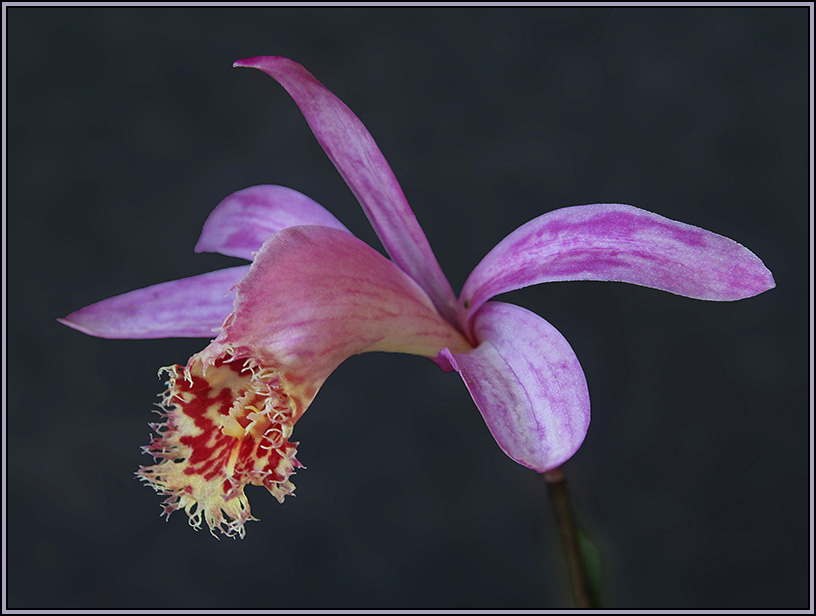|
|
|
|
|
|
 |
|
I first came across Pleiones at the Ballymena spring
show and was instantly seduced, there on the bench
stood a pan of naked ladies, holding there petals and
sepals out like arms, announcing to the world ‘Ta
dah’.
I’m new to the world of alpines and am constantly
finding amazing plants, which I think should be more
widely gown. Is it that they are difficult to grow? To
a certain degree, but I believe it is due to a lack of
understanding their requirements.
Let me impart what I’ve learned from my limited
experience, second hand knowledge and the wonderful
world of websites, ( check out “The Pleione
Website”).
The
pleiones pictured here were shown at the Ulster
Group Members' Show 2016, |
|
|
Pleione
"Fireball" |
|
|
|
| Pleiones are terrestrial orchids that originate in
the foothills of the Himalayas, in a climate with a
distinct spring, summer, autumn, winter. The growing
season starts with the production of a flower spike.
Soon after this the roots start to develop, which are
unusual in the fact that only a certain number are
produced each year and they are annual in nature (lose
one through rot or damage and it ain’t coming back).
Root production is followed by foliage, as the plant
develops some modesty and the youthful flower fades
after its few weeks of splendour. New bulbils form
either side of the mother pseudo bulb, which shrivels
as the season progresses. Towards the end of the
growing season, foliage fades, roots shrivel and die
and the pseudo bulb enters dormancy.
|
|
|
|
|
| Cultivation
begins in February/March time with the planting
of the newly acquired, or last season’s pseudo
bulbs. Place with approximately 2/3rds of the
bulb covered in an orchid based growing medium
(3 parts bark, 2 parts shredded moss). Some
people use whatever potting medium they have to
hand, but I would suggest starting with
something open and spongy to reduce the risk of
the roots rotting.
|
| At
this early stage watering should be sparse;
misting is an effective method of keeping the
pseudo bulb moist and avoiding root rot. Place
somewhere frost free but not too warm,
approximately 10 degrees C. Temperatures above
this may cause early foliage growth and no
flower, or a flower which browns and dies,
before opening.
|
| As
the flower spike develops, the pseudo bulbs can
be gently lifted (paying attention to the roots)
and orientated with the spikes facing the same
direction to give a more appealing look.
|
|

|
|
|
Pleione
"Silver Wedding"
|
|
|
 |
|
Wait with excitement until the flower opens
(April/May), clap yourself on the back when it does,
blame the pseudo bulb if it doesn’t, it couldn’t
possibly be my instruction.
Watering can be slowly increased as the foliage
develops and in the summer they can be placed outside
with a little shade where they will enjoy a regular
dose of rain, especially with our climate. When the
leaves turn yellow it’s time to stop watering and
allow them to dry out.
|
| Feeding should take the form of the usual orchid
mantra, “weekly, weakly”, when the foliage is well
formed, a weak feed on a weekly basis. Approximately
once a month do not feed but instead give the plant a
good drenching to remove any excess nutrient build up.
There is no need for special fertiliser just a balance
liquid feed and an occasional foliar feed.
|
| Pleiones can be grown from seed but are an orchid
and need flasking, this is something I am unfamiliar
with, needing specialised equipment.
|
|
|
Pleione
"Phoenix" |
|
|
Pests and diseases:
Viruses:
Symptoms: includes deformed leaf growth, streaks,
speckles and colour breaks.
Pleiones are susceptible to viruses, for which there
is no cure. Any infected pseudo bulbs will have to be
discarded. Good housekeeping is the best solution,
most viruses will be spread be sap suckers, so keep
those suckers under control.
|
|
Colletotrichum
gloeosporiodes (fungal) disease:
Symptoms: small black dots that expand into pits on
the surface of the pseudo bulb, leaves turn brown and
often form concentric rings.
Spread by spores, can be transmitted by water
splashes.
Treatment: Fungicides such as myclobutanil.
|
|
Brevipalpus oncidii (false spider mite):
Symptoms: damages cells during feeding, in severe
cases brown area are created on the surface of the
pseudo bulb, reducing its vigour. May transmit viruses
during feeding.
Treatment: chemicals containing refined oils are
effective at suffocating these mites.
Pleiones can also be attacked by the usual suspects -
aphids, mealybugs, slugs, snails and mice. They can be
treated in the normal way you would deal with these
pests.
|
|
|
|
|
|
|
|
